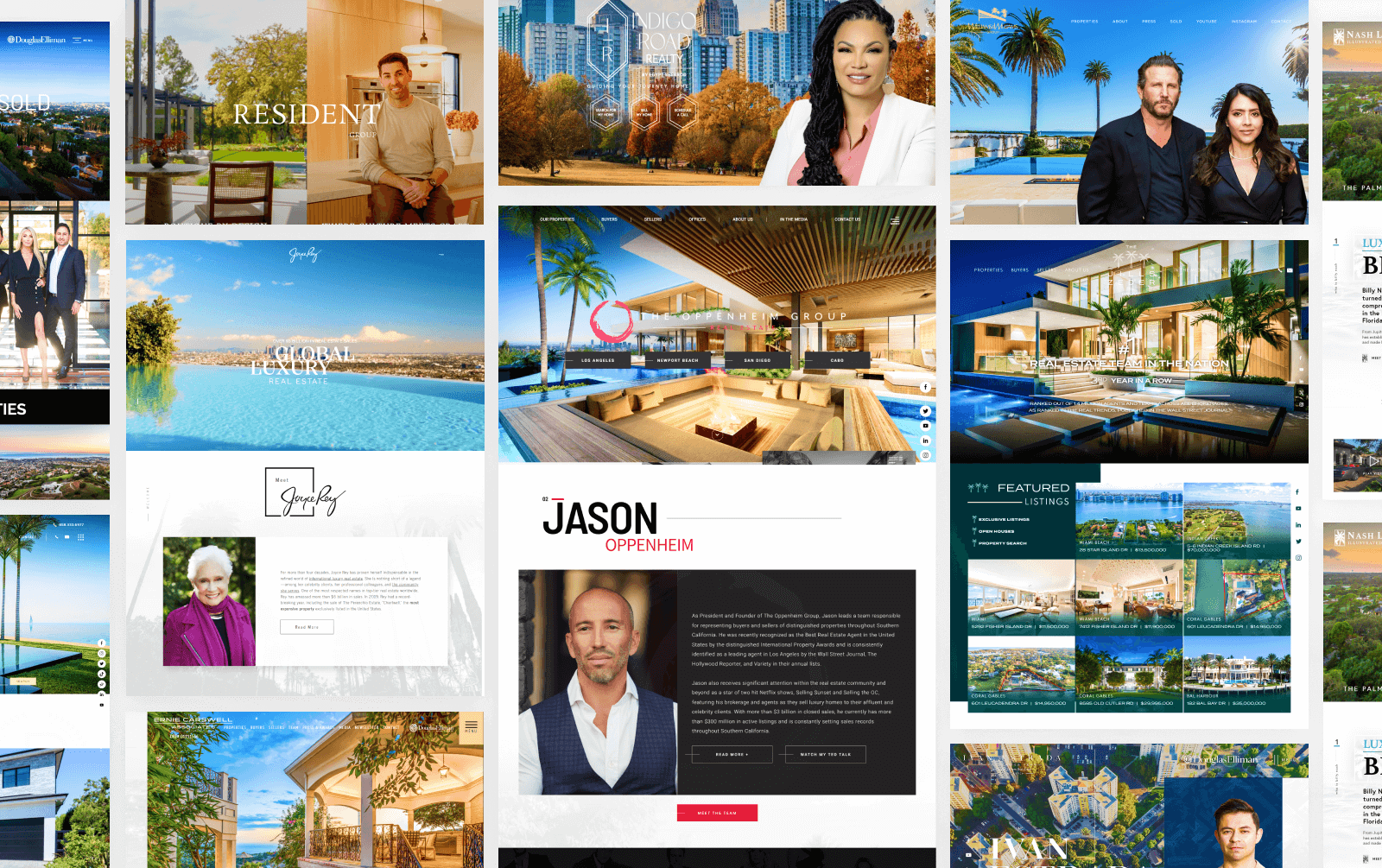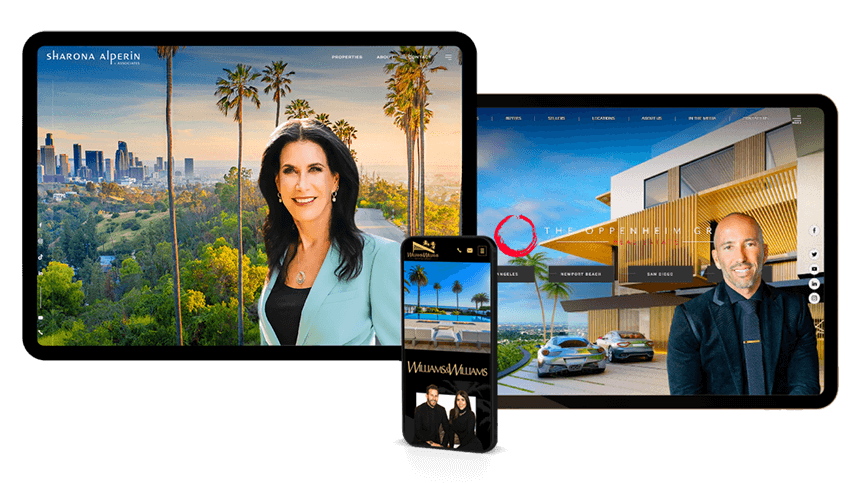Anniversary Special: Insider Tips for Award-Winning Website Design
What 26 years in web design has taught us
When Agent Image launched its first real estate websites in the late '90s, people were still asking what the internet could do for business. A few clicks and a homepage felt like enough.
Since then, expectations have changed dramatically. Expectations are higher, design is sharper, search is smarter, mobile is everywhere, and the way buyers and sellers make decisions is a completely different game. We've changed, too—building over 30,000 websites, growing alongside agents who trusted us.
To mark our 26th anniversary, we spoke with Agent Image leaders and veterans Jon Krabbe, Ginette Wright, Brian Shorr, and Cherry Jerusalem about the real estate website design tips that have stood the test of time, the lessons that have stayed with us, and what we’re looking forward to in the years ahead.
Table of Contents
What worked five years ago may not work today.
Keep your site in step with how real clients browse, decide, and reach out.
-
Design earns trust faster than anything else
💡38% of people stop engaging with a site if the layout is unattractive
💡52% say a poor mobile experience reduces trust
SourceWhen someone lands on your site, they’re already forming an impression. Brian Shorr, VP of Business Development at Agent Image, believes that impression “often forms before a visitor has even clicked a button”.
In fact, the overall layout, the typography, the spacing between elements—all of it communicates something about how you work, and what kind of experience a client might expect. “That doesn’t mean your design has to be flashy, though,” he added.
Case in point: our award-winning design for the Jason Barry Team’s website, which makes generous use of white space and balanced elements.
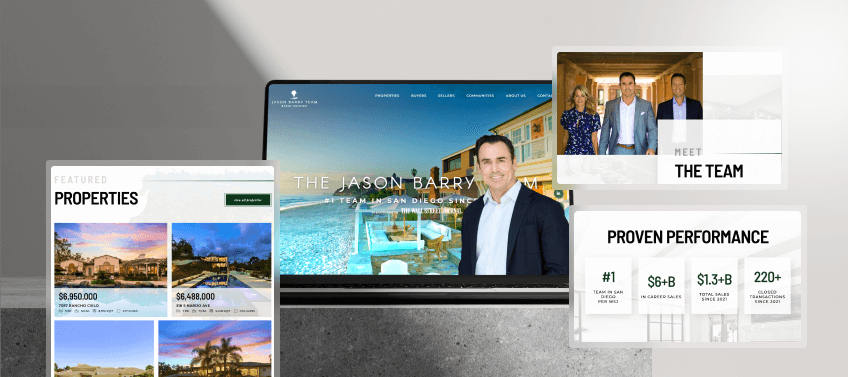
The Jason Barry Team’s award-winning real estate website earned the RealTrends Best Design award, recognized for its branding and user experience.
“Some of the most effective websites we’ve built over the years are the ones that exhibit restraint,” Brian continued. “They use space intentionally. They focus on clarity. And, most importantly, they don’t overcomplicate things.”
-
A good website is part of the business
💡82% of REALTORS® display their own listings
💡70% include information about buying and selling
SourceIn the early years, having your listings online was a novelty. Today, it's the baseline.
“The agents who grow online are the ones who treat their websites as part of their client experience, not separate from it,” said Cherry Jerusalem, Director of Client Services at Agent Image.
“Over time, we’ve seen agents use their sites to answer questions, prepare clients, publish resources, and stay top-of-mind,” Cherry added. “Many of those sites have evolved right alongside their businesses, and it’s been a privilege to build with them.”
-
Mobile cannot be an afterthought
Most people aren’t visiting your site from a laptop. They’re coming in from a phone, on the go, between appointments, often while multitasking. The best real estate website design accounts for that behavior from the very start.
Agent Image co-founder Jon Krabbe said it best: “Mobile-first design means planning for modern consumer behavior from the start. Navigation needs to be touch-friendly, pages should load quickly, and search should feel seamless.”
In other words, every interaction should work smoothly within the space of a phone screen.
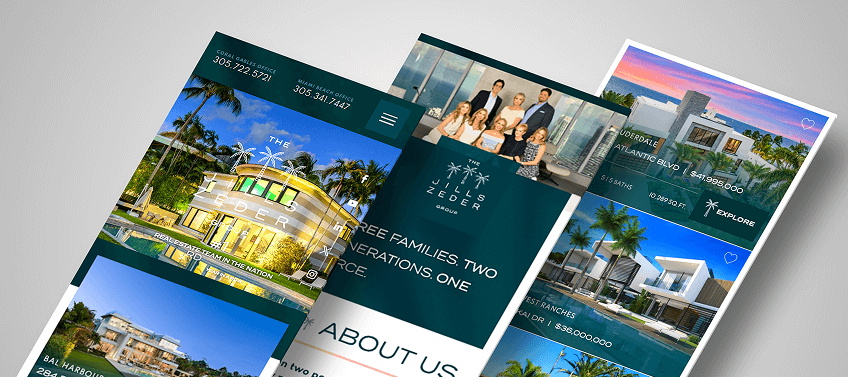
A large percentage of web traffic comes from mobile users, so it’s crucial to design your website accordingly.
“One site that handles this exceptionally well is JillsZeder.com, a project we designed for one of the top luxury teams in the country,” Jon continued. “It was recognized by RealTrends for outstanding performance in the Best Mobile Website category, and it’s a great example of what thoughtful mobile design can do.”
-
Features matter when they’re built with purpose
We’ve seen plenty of impressive features come and go. But some tools have stayed useful because they solve real problems.
Features like interactive maps, side-by-side search layouts, lifestyle filters, and detailed neighborhood pages have lasted because they help buyers explore with more clarity. They reduce friction, surface relevant information faster, and they let users feel in control of the experience.
Add the features your clients actually use.
Give buyers tools that make their search easier and more enjoyable.
-
Selling the community helps buyers picture their future
People can find listings anywhere. What they can’t always find is a reason to care about this place over all the others. Helping them fall in love with the location—and understand what it’s like to live there—is what helps visitors go beyond simple curiosity and actually commit to a place or a home.
That might mean leading with visual cues that reflect the character of the town: sailboats, trails, farmers markets, or historic architecture. Or it could take the form of deep local content—neighborhood spotlights, school insights, and area guides that go beyond what national portals provide.
“Designing for community is a strategic choice,” according to Jon. “When local context shows up in the visuals, structure, and user flow—how people search, what they’re drawn to, what signals trust—it builds a deeper connection.”
-
Performance plays a bigger role than most people realize
A fast, well-structured site keeps people engaged and improves how listings show up in search. While it’s easy to focus on visuals, behind-the-scenes performance has just as much impact—especially when it comes to SEO and user behavior.
In the words of Agent Image’s Vice President of Marketing, Ginette Wright: “Success online requires a consistent and sustained effort on two fronts—technical optimization, by working with your website provider to ensure a seamless user experience, and content optimization, by creating relevant, valuable content that’s tailored to your audience and optimized for both search engines and AI-driven answer engines.”
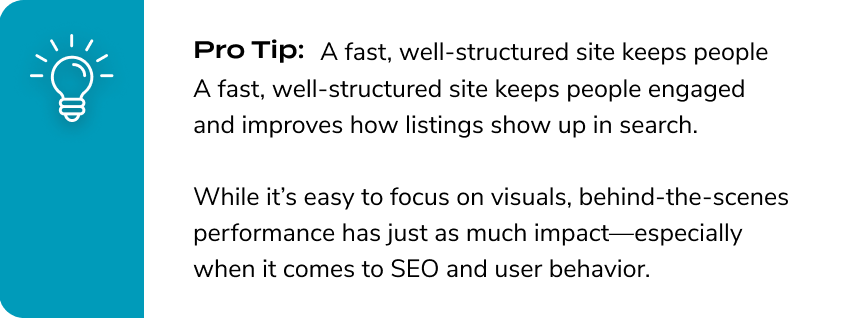
-
Search behavior has changed, and websites need to follow
“Buyers aren’t always typing in URLs anymore,” noted Brian Shorr. “They’re asking Siri, screenshotting listings, scrolling Pinterest, or using image and voice search to discover homes.”
Here’s what to focus on:
-
Add alt text to every image so visual search tools (like Google Lens or Pinterest) can surface your listings
-
Use natural language in your copy—think how people speak, not just how search engines crawl
-
Refine your metadata to improve how pages appear in search results and previews
-
Enable geotargeting features to support location-specific content or prompts
-
Use geofencing or smart notifications if you’re running ads or open house campaigns tied to specific areas
“This kind of search might’ve seemed futuristic when we started, but now it’s standard,” he added.
According to Jon Krabbe, staying ahead is key. “Our strategy has evolved with the market,” he said. “What worked in 2005 wouldn’t get noticed in 2025.”
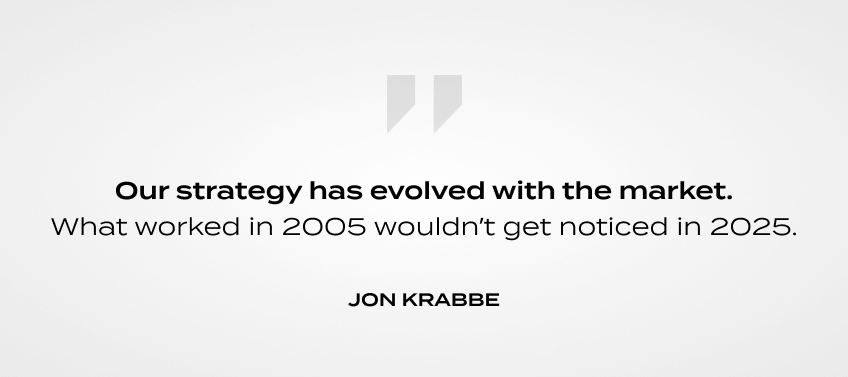
-
-
Keep your site fresh to keep it working
A website isn’t a “set it and forget it” tool. The agents who see the most results are the ones who make updates part of their regular routine. That might mean adding new listings, refreshing market data, publishing blog posts, or updating community pages with seasonal events.
Regular updates do more than show clients you’re active—they also signal to search engines that your site is current, which can improve visibility.
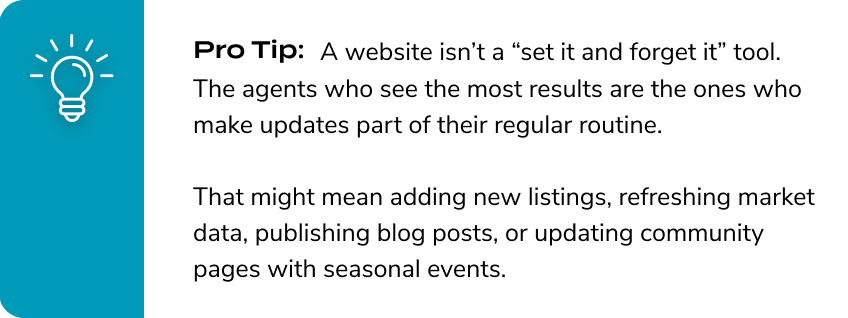
-
Great design sets the stage, but the effort still has to come from you
It’s easy to assume that once the website is live, the hard part is over. The design is strong, the branding feels right, and the listings are all in place—so now the leads should start rolling in, right?
Not exactly.
“You can't publish a website and expect it to generate traffic and leads on its own. It's like putting a "for sale" sign in front of a property and never putting in any effort to sell it,” said Ginette Wright, Vice President of Marketing at Agent Image.
True enough, a website can do a lot. It can showcase your expertise, capture interest, and help buyers or sellers understand who you are and how you work. But it can’t replace you. It doesn’t follow up with a lead, or post that market update, or keep track of which client needs a check-in.
“The most successful agents understand that effort in = results out. That means, for example, no effort = no results,” added Ginette.
What we’ve seen over and over is that the agents who get the most out of their websites are the ones who keep putting in the work. Online and offline. They update their content, they stay active in their communities, they keep showing up. The site supports that effort, but it doesn’t take the place of it.
Frequently Asked Questions
The features that convert are the ones that help people take the next step without getting frustrated. Interactive maps, saved searches, lifestyle filters, and neighborhood guides all give users better control over how they search.
Yes, it’s a smart move. More buyers are using voice search on their phones and image search tools to explore listings, especially when they’re on the move. You can prepare your site by using natural, conversational language in your content, adding descriptive alt text to images, and organizing property data clearly.
Start by compressing images and removing anything that slows your site down. If your homepage takes more than a few seconds to load, most people won’t stick around long enough to see your listings. For SEO, structure matters. Use proper headings, write in natural language, and make sure your property pages are easy for search engines to read.
At Agent Image, our team of SEO specialists can help you identify areas for improvement and implement best practices—from technical site audits to content optimization. We also offer ongoing SEO services to help drive traffic, improve rankings, and strengthen your online visibility over time.
Start by checking your engagement. If people aren’t clicking beyond the homepage, filling out forms, or using your property search, something isn’t working. Outdated design, slow performance, or unclear navigation can all be red flags, even if the site technically works. You should also pay attention to client feedback.
A website and team that grow with your business
We’re proud of the websites we’ve built, but even more proud of the relationships behind them. Some of our earliest clients are still with us today. Across markets, styles, and years, we’ve been lucky to play a part in so many journeys. Thanks for being part of ours!
We’re here to support your business for the long run with a team that knows your goals and grows with you. Want to talk about what’s next for your brand? Contact us for a free consultation!
